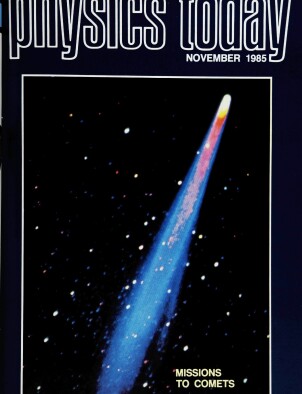Space Missions to Comets
DOI: 10.1063/1.880991
Comets appear to be the most pristine remnants of the material from which the solar system formed. We wish to know more about these eccentric objects to gain insight into the conditions and processes that prevailed during the solar system’s formation and early stages of evolution. Chemical, isotopic and mineralogic studies of comets will tell us about the dynamical and nucleosynthetic processes that operated prior to and during formation of the nebula, and about the original chemistry of the solar system. Studies of the physical properties of comets and of the material of which they are composed will tell us about the agglomeration and accretion of bodies in the outer solar system. The study of comets is also relevant to the evolution of life: Comets may have made substantial contributions to the present atmospheres of Venus, Earth and Mars, and it is possible that either the prebiotic molecules necessary for the evolution of life or the raw materials from which these molecules formed were brought to Earth by comet‐like objects. Finally, the study of the interactions between sunlight, plasmas, gas and dust in comets should have applications to processes in a great variety of astrophysical settings throughout the universe.
This article is only available in PDF format
References
1. N. Calder, The Comet is Coming, Penguin, New York (1982).
2. L. L. Wilkening, ed., Comets, Univ. Arizona P., Tucson (1982).
3. D. A. Mendis, H. L. F. Houpis, M. L. Marconi, “The Physics of Comets,” Fundamentals of Cosmic Physics, 10, 1 (1985).
More about the Authors
Marcia Neugebauer. Jet Propulsion Laboratory, California Institute of Technology, Pasadena, California.




